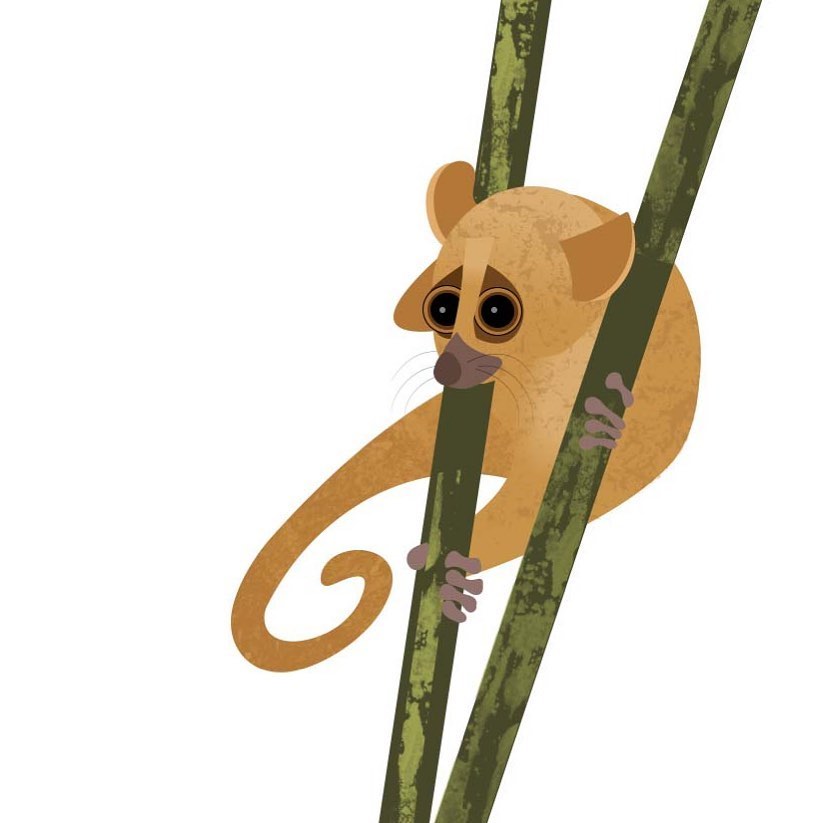Welcome!
Welcome to page two of 100 LEMURS, an international collaboration between the Duke Lemur Center, a world leader in the study, care, and conservation of lemurs, and Rachel Hudson, an award-winning wildlife illustrator based in the UK!
To return to page one and to view our first 14 featured species, please click here.
Day forty-six
Meet the golden brown mouse lemur (Microcebus ravelobensis)!
Golden brown mouse lemurs are found exclusively in Ankarafantsika National Park in Madagascar and are endangered. Unlike other species of small lemur, golden brown mouse lemurs seem to struggle to live in disturbed habitats or forests that have been impacted by logging. In those habitats, gray mouse lemurs are more common, even if greater numbers of golden brown mouse lemurs had been recorded there prior to the deforestation.
Golden brown mouse lemurs are less antagonistic in their interactions with other members of their species when compared to gray mouse lemurs. There has been no female dominance observed in this species.
Day forty-seven
Danfoss’ mouse lemur (Microcebus danfossi), which lives in just six fragments of forest in northwestern Madagascar, is relatively large for a mouse lemur: Its body weight is 63g, whereas the tiny Madame Berthe’s mouse lemur weighs only 30g!
As a group, mouse lemurs are the smallest lemurs (and primates) on Earth. Their scientific genus name, Microcebus, is from the Greek roots are mikros and kebos — which translate to “small” and “monkey.”
One of the earliest mentions of mouse lemurs goes all the way back to Buffon’s description in 1776, when he referred to them as the “rat de Madagascar.” In Malagasy, mouse lemurs have many names, but perhaps the most common is tsitsihy.
Day forty-eight
Meet the rufous mouse lemur (Microcebus rufus)!
Prior to the year 2000, only two species of mouse lemur were recognized – the gray mouse lemur in the west, and the rufous mouse lemur in the east. With more observations and accessibility to genetics, more and more species were identified. That means the rufous mouse lemur is not as common as once believed, and its range is limited to rainforest and swamps in the southeast.
While they are small, they are capable travelers and males have been observed dispersing over roads and waterways, traveling up to 1 km in a night in search of mating opportunities.



